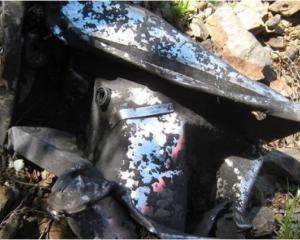Rescuers should have gone into the Pike River mine more or less straight away, says a miner who survived New Zealand's last coal-mining explosion disaster.
Ray Frew was working in the Strongman mine, just 30km from the Pike River mine, in 1967 when an explosion took place.
Of the 240 workers in the mine at the time, 19 were killed.
Rescuers wearing breathing apparatus went into the mine within 20 minutes and the first bodies were brought to the surface about three hours after the explosion.
Smoke and highly explosive firedamp (methane gas produced by coal) made the task of searching for survivors and bodies particularly dangerous.
When mixed with a certain level of air, firedamp becomes highly explosive and those involved in the rescue were at constant risk of another explosion.
Fifteen bodies were recovered that day, before the rescue was called off because methane levels were too high.
Five hours later, the air cleared but smouldering coal caught fire.
It took another three weeks to retrieve two more bodies and the tunnel was sealed off before the last two could be recovered.
Mr Frew said he believed the time to go in would have been shortly after the explosion, because the energy of it would have used up all the oxygen and bad gases in the shaft, leaving it relatively clear for a period.
"I'm wondering why they didn't, or why they didn't even go in as far as the loader.
Those fellas [Daniel Rockhouse and Russell Smith] came out there; why couldn't someone go in?It was a question many of the mining families were asking too, said Lawrie Drew, father of Zen Drew (21), who is inside the mine.
"People are increasingly saying to us, `They went into Strongman straight away, why not here?"'Pike River chief executive Peter Whittall has already responded to that question from media, saying the problem was that the situation inside the mine was completely unknown.
It was a different mine to Strongman and the decision was made almost immediately that it was too risky to send anyone else in.
Police also have stuck to their stated aim of sending other people into the mine only when it was clear their lives were not at risk.
"I will say it again. Safety is paramount.
"We are not sending people in there and putting them at risk, too.
"We are just not doing that, until we get the tests that say it is safe," said the man in charge of the search and rescue operation, Superintendent Garry Knowles.
Mr Frew said given the force of the explosion where Mr Rockhouse and Mr Smith were, he did not think the 29 men further inside the mine would have survived the explosion.
"I don't think they'll be coming out.
"Anybody who did think it would have to be dreaming, I'd say."
He thought people were coming to accept that reality now, but he still thought someone should have been down the mine already.
He believed the mining company and police already knew the worst had happened.
"I think they know well what's in there, but they just won't say."
As justification for the cautious approach, Prime Minister John Key has pointed to an Australian mine rescue that went wrong when rescuers entered prematurely and were killed in a blast.












